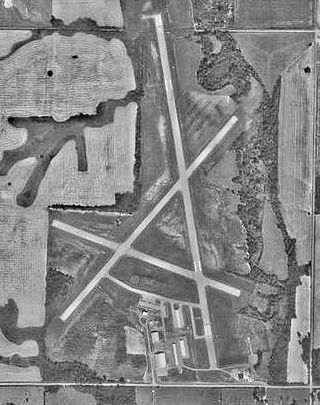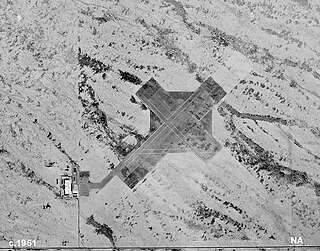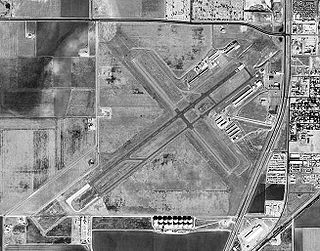
Lubbock Preston Smith International Airport is five miles north of Lubbock, in Lubbock County, Texas, United States. Originally Lubbock International Airport, it was renamed in 2004 for former Texas governor Preston E. Smith, an alumnus of Texas Tech University.

Twentynine Palms Airport is a public use airport located six nautical miles (11 km) east of the central business district of Twentynine Palms, a city in San Bernardino County, California, United States. It is owned by the County of San Bernardino.

Denton Enterprise Airport, also known as Denton Airport and previously Denton Municipal Airport, is a city-owned, public-use airport located three nautical miles (6 km) west of the central business district of Denton, a city in Denton County, Texas, United States.

Fort Morgan Municipal Airport is six miles north of Fort Morgan, in Morgan County, Colorado, United States. The airport is in the city limits in a detached section of the city. The National Plan of Integrated Airport Systems for 2011–2015 categorized it as a general aviation facility.

Spencer Municipal Airport, also known as Northwest Iowa Regional Airport, is a public airport located three miles (5 km) northwest of the central business district of Spencer, a city in Clay County, Iowa, United States. It is owned by the City of Spencer.

Big Spring McMahon–Wrinkle Airport is a municipal airport two miles southwest of Big Spring, in Howard County, Texas. The FAA's National Plan of Integrated Airport Systems for 2009–2013 categorized it as a general aviation airport.
Hamilton Municipal Airport is a city-owned public-use airport located two miles (3 km) south of the central business district of Hamilton, a city in Hamilton County, Texas, United States.

Crookston Municipal Airport, also known as Kirkwood Field, is a city-owned public-use airport located four nautical miles (7 km) north of the central business district of Crookston, a city in Polk County, Minnesota, United States.

Dalhart Army Air Base is a former World War II military airfield complex near the city of Dalhart, Texas. It operated three training sites for the United States Army Air Forces from 1943 until 1945.

Atkinson Municipal Airport is three miles northwest of Pittsburg, in Crawford County, Kansas, United States. The National Plan of Integrated Airport Systems for 2011–2015 categorized it as a general aviation facility.

Malden Regional Airport is a city-owned, public-use airport located three nautical miles (6 km) north of the central business district of Malden, a city in Dunklin County, Missouri, United States. This airport is included in the National Plan of Integrated Airport Systems, which categorized it as a general aviation facility.

Fort Sumner Municipal Airport is a village owned, public use airport located two nautical miles (4 km) northeast of the central business district of Fort Sumner, a village in De Baca County, New Mexico, United States. It is included in the National Plan of Integrated Airport Systems for 2011–2015, which categorized it as a general aviation airport.

Echeverria Field is an abandoned airfield, located approximately 15 miles (24 km) west of Wickenburg, Arizona.

Thompson–Robbins Airport is 6 miles (9.7 km) northwest of the center of Helena–West Helena, in unincorporated Phillips County, Arkansas, United States. It is owned by the city of Helena–West Helena.

Coleman Municipal Airport is an airport two miles northeast of Coleman, Texas.

Artesia Municipal Airport is a city-owned, public-use airport located three nautical miles (6 km) west of the central business district of Artesia, a city in Eddy County, New Mexico, United States. It is included in the National Plan of Integrated Airport Systems for 2011–2015, which categorized it as a general aviation facility.

Hale County Airport is a public airport about 1 mile (1.6 km) south-southwest of Plainview, Texas.

During World War II civilian flying schools, under government contract, provided a considerable part of the flying training effort undertaken by the United States Army Air Forces.

The 31st Flying Training Wing was a training formation of the U.S. Army Air Forces (AAF) during World War II.

The 38th Flying Training Wing is an inactive United States Air Force unit. It was last assigned to the Western Flying Training Command, and was disbanded on 16 June 1946 at Williams Field, Arizona.




















